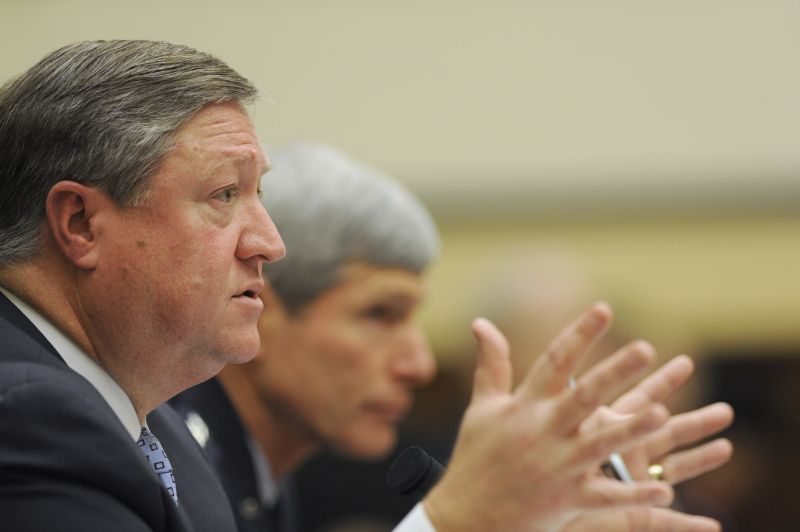The Air Force secretary and chief of staff discussed planned force structure changes, and efforts to balance service active-duty and reserve components, during congressional testimony here March 20.
During a Senate Armed Services Committee hearing, Secretary of the Air Force Michael Donley and Air Force Chief of Staff Gen. Norton Schwartz said the service’s fiscal 2013 budget request represents the culmination of many hard decisions regarding the Air Force’s future given new strategic guidance and declining budgets.
“Finding the proper balance between force structure, readiness, and modernization has been our guiding principle,” Donley said. “In short, we determined that the Air Force’s best course of action is to trade size for quality.”
Responding to committee members’ questions regarding the Air Force’s plan to divest its C-27J Spartan fleet and instead rely on the C-130 Hercules, Donley said the twin-turboprop C-27J satisfies a narrow piece of the direct support mission the Air Force provides the Army.
“As you look at fleet management overall, the better strategic choice, in our view, was to go with the C-130 because it is more flexible across the broader range of tactical airlift requirements,” Donley said.
Schwartz said that while the C-27J is somewhat cheaper to operate on a per-flying-hour basis when compared to the C-130, there are several other factors to consider. Contractor maintenance, for example, can often times be more costly than that done by uniformed personnel.
“A key factor here is that the maintenance for the C-130 is organic and the maintenance for the C-27 is contractor logistics support,” Schwartz said. “There’s a considerable difference in relative expense there.”
Schwartz said retaining the C-27J fleet would require the Air Force to cut $1.4 billion from other vital Air Force missions, while Donley added that the Air Force plans to mitigate the effects of the changes on the associated Air National Guard units.
“In recognizing the impact of the C-27 changes across the Guard, and specifically the units that might be impacted, where we could, we took mitigating action to bring in follow-on missions, [such as] MC-12 missions, remotely piloted aircraft, and mission control units,” Donley said.
Schwartz said service leaders were careful to balance the active duty, Air National Guard and Air Force Reserve components as part of its budget proposal.
“The fundamental question here is, with a smaller air force, how do you manage the activity level across the entire portfolio in ways that don’t produce adverse effects on the active-duty side – activity levels that in a better economy might cause people to move on – or on the Reserve and the Guard side – activity levels that might make employers less hospitable to the support that they provide to our Guard and Reserve Airmen,” Schwartz said.
To that end, the Air Force balanced the three components so that the active duty would maintain a deploy-to-dwell ratio of one-to-two, while the Guard and Reserve components would maintain a ratio of not less than one-to-four, the general said.
“A Total Force clearly gives us more depth, more breadth and more experience,” Schwartz said. “The key thing is to get the balance right, and that depends on what we think the activity level is likely to be and how much force structure we have left.”
Donley said this balance is especially important considering the demanding operational tempos, including both surge and rotational requirements, that are part of the current and projected strategic environment.
“As our force gets smaller, all of our components get smaller together and will become even more closely integrated,” Donley said. “We remain fully committed to our Total Force capability and have proposed several initiatives to strengthen integration of effort.”










